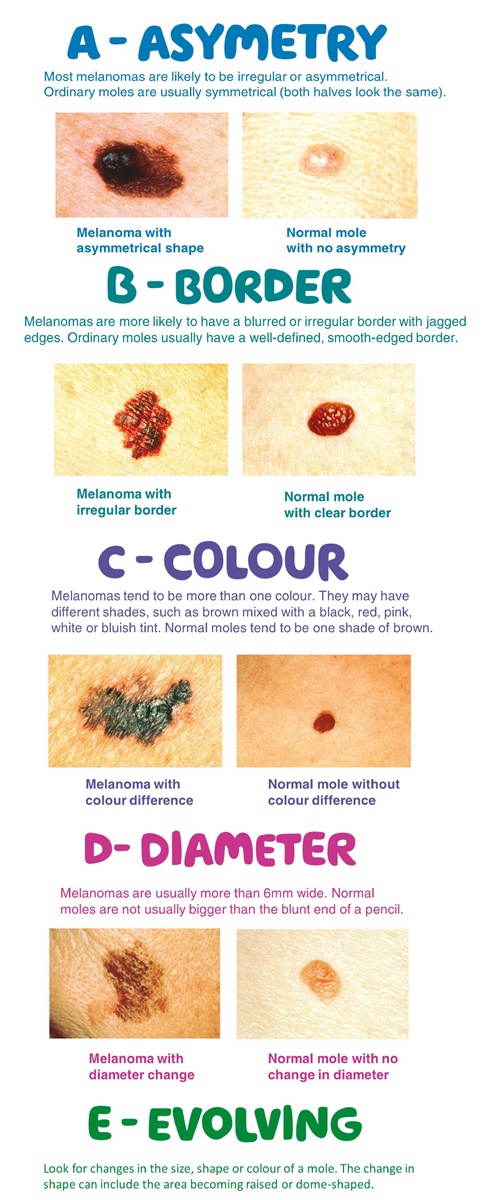May is Skin Cancer Awareness Month. In this blog, Cancer Information Nurse Teri looks at the symptoms of skin cancer and highlights ways that you can protect yourself in the sun.
The incidence of skin cancer has increased over the last 10 years and is now the most common form of cancer in the UK. Skin cancer is also one of the most preventable types of cancer. One of the biggest risk factors of skin cancer is being exposed to the sun too much. So, with our summers set to get hotter, it is increasingly important to remember to protect your skin whenever you are outdoors – as this can help to reduce your risk of skin cancer.
There are three main types of skin cancer. The two most common types of skin cancer are basal cell carcinoma (BCC) and squamous cell carcinoma (SCC) which are known as non-melanoma skin cancer. The third main type is malignant melanoma, which is less common. There are other rarer types of skin cancer which affect less than 1% of the population. We have information about these cancers on our website.
What is good to know is that most skin cancers can be cured, if detected and removed early. So, it is important to be aware of what to look out for, to promptly detect a possible skin cancer.
What symptoms do you need to look out for?
Basal cell carcinoma
Squamous cell carcinoma
Melanoma
Melanomas can start with a change to normal skin. These can develop from a mole or freckle that you already have. But they more often appear as new marks. They can be on any part on the skin. They may look like a dark area, or an abnormal mole. It can be difficult to tell the difference between a normal-looking mole and a melanoma. Always let your doctor know about any changes you might notice, as soon as possible.
The ABCDE list helps you know what to look for:
If, like me, you have fairer skin which burns and rarely tans in the sun, you have a higher risk of developing skin cancer. However, people who have darker skin can still get skin cancer. Regardless of skin type, everyone should be in the habit of being safe and protecting their skin when they are outdoors.
How to protect your skin and reduce your risk of skin cancer
Although it is important to protect ourselves from the sun, we still need to have a small amount of exposure to sunshine, regularly. This because the sun helps our bodies make vitamin D, which we need to keep our bones and teeth healthy.
For more information about sun protection, you can order our easy read, Stay healthy – be safe in the sun. And on our website we have more information about protecting your skin if you have had skin cancer.
_________________________________________________________________________
To see what else Macmillan's cancer information team has been blogging about, please visit our blog home page! You can subscribe to receive our blogs by email or RSS too.
We're with you every step of the way
The Macmillan team is here to help. Our cancer support specialists can answer your questions, offer support, or simply listen if you need a chat. Call us free on 0808 808 00 00.
Comments? Feel free to add them below (you need to be logged in).
Keep in touch Follow Macmillan’s cancer information team on Twitter @mac_cancerinfo
Whatever cancer throws your way, we’re right there with you.
We’re here to provide physical, financial and emotional support.
© Macmillan Cancer Support 2025 © Macmillan Cancer Support, registered charity in England and Wales (261017), Scotland (SC039907) and the Isle of Man (604). Also operating in Northern Ireland. A company limited by guarantee, registered in England and Wales company number 2400969. Isle of Man company number 4694F. Registered office: 3rd Floor, Bronze Building, The Forge, 105 Sumner Street, London, SE1 9HZ. VAT no: 668265007